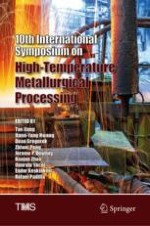2019 | OriginalPaper | Buchkapitel
Extraction Process of Antimony from Stibnite by Electrothermal Volatilization
verfasst von : Dongbo Li, Xiaohua Yang
Erschienen in: 10th International Symposium on High-Temperature Metallurgical Processing
Aktivieren Sie unsere intelligente Suche, um passende Fachinhalte oder Patente zu finden.
Wählen Sie Textabschnitte aus um mit Künstlicher Intelligenz passenden Patente zu finden. powered by
Markieren Sie Textabschnitte, um KI-gestützt weitere passende Inhalte zu finden. powered by
